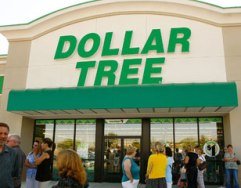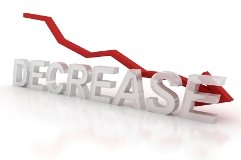July 11, 2011, - 3:19 pm
No Dolla? Holla!: Dollar Store Slump Shows Just How Bad Obamaconomy is
When people are pinching pennies this tight, they won’t waste even a dollar on non-necessities. That’s what dollar store owners are learning with slumping sales. The typical dollar store splurges are gone. They’ve dried up. Shows just how bad the Barack Obama economy is, with no end in sight to rising unemployment and gas prices. This story just begs changing of the “old” urban saying, “No dolla, no holla,” to “No dolla, HOLLA!” You better holler. Or America will keep sinking. Right now, America has a bunker mentality. But if you just hide in the bunker for the long haul, things won’t move or change. And lest you think I blame only Obama, think again. The GOP runs the House. They are in the driver’s seat, and drove right to spending your money on the economy-saving organizations, NPR and Planned Parenthood. They are as much to blame as Obama for America’s misery and won’t make the hard choices OR the right choices.


Sales and profit growth have started to slump at the deep-discount retailers called dollar stores, after a robust performance during the recession, a sign that even fairly cheap toys and other small indulgences now are a stretch for some consumers.
In the past several weeks, Dollar General Corp., Family Dollar Stores Inc. and Dollar Tree Inc., the country’s three largest chains that sell sharply discounted food, household staples and other items in modest-size stores, all have missed their quarterly earnings targets.
All three retailers cited transportation costs due to rising diesel-fuel prices as a major reason for their earnings shortfalls. But the chains also said their price-sensitive customers, pummeled by high unemployment, stagnant wages and soaring gasoline prices, are buying more food and other basics like cleaning products, which have relatively low profit margins, and fewer higher-margin discretionary products, such as apparel and home decorative items.
Shoppers have become less likely to splurge, for example, even on a $5 die-cast Transformer toy or 2-for-1 children’s bathing suits at $7.
“This is a sector that was in nirvana during the recession, as customers traded down,” said Adrianne Shapira, a retail analyst at Goldman Sachs. “But now their shoppers have a bunker mentality. With all this mounting inflation crowding out discretionary purchases, it’s painful.”
The chains, meanwhile, are facing rising food prices that they have been reluctant to pass on to their struggling core customers, who typically have family income of less than $40,000. . . .
All three dollar-store chains continue to post same-store sales—or sales at stores open at least a year—that their bigger discount rivals would envy, with Dollar General, Family Dollar and Dollar Tree reporting gains in the latest quarter of 5.4%, 4.7% and 7%, respectively, from a year earlier. Still, Dollar General and Family Dollar, which sell a high proportion of food and household basics, have seen their sales increases drop from the torrid pace of just a few years ago.
Dollar General posted earnings for the fiscal first quarter ended April 29 that missed Wall Street’s expectations by two cents a share. But the biggest surprise was that its gross margin rate shrank by 0.63 percentage point, as the company marked down leftover winter clothing and home furnishings. It also refrained from passing along its higher commodity costs on such products as coffee, whose wholesale price has risen four times since December.
“We have 228 items that are priced at $1 that we think are incredibly important to our customers that we elected not to take price increases on,” Dollar General Chief Executive Rick Dreiling told analysts during a June 1 earnings conference call. “This sounds almost silly, but a $1 item going to $1.15 in our channel is a major change for our customer.”
Two weeks ago, Family Dollar, facing many of the same pressures as Dollar General, missed analysts’ earnings expectations by four cents a share for the quarter ended May 28. Its same-store sales gains also were lower than analysts expected, as was its gross margin rate, which fell by about 0.36 percentage point.
Family Dollar blamed the margin squeeze mainly on shoppers’s inability to afford more discretionary products.
Good luck, America. If things continue the way they are, we’re screwed. No, we’re already screwed.
Tags: $1, Adrianne Shapira, Bad Economy, bunker mentality, decline, decrease, discretionary spending, dollar, Dollar General, Dollar General Corp, Dollar Store Slump, Dollar Stores, Dollar Tree, Dollar Tree Inc, economy, Family Dollar, Family Dollar Stores Inc., Goldman Sachs, No Dolla No Holla, Rick Dreiling, splurge, splurges


If this is the Hope, or the Change, it plain sucks!
P. Aaron on July 11, 2011 at 3:39 pm